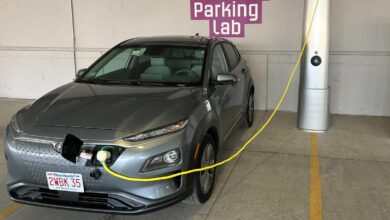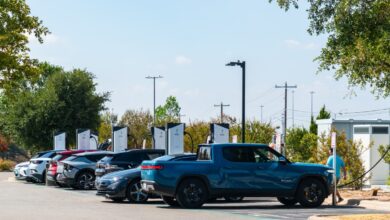The wondering and the woeful

On a recent trip up the West Coast of Australia from Perth to Darwin, down to South Australia then back across the Nullarbor I was able to experience the two NRMA portable DC chargers. These units are basically constructed in a factory and transported to a site that requires instant DC charging.
Both units have a similar build style, and include approximately 28kW of rooftop solar, battery storage and a backup diesel generator for the rare days of high demand. Each unit has two separate 75kW Tritium DC chargers with two charging cables each.
Both units are located in areas of high solar production, and I estimate there’s enough solar to easily charge at least two electric vehicles on an average solar production day.
Very few EV drivers could dispute that on paper this arrangement is a suitable solution, given that EV visits to remote areas are less than 20 cars per week.
Unfortunately, looking good on paper is one thing, performing as expected is another.
The Woeful
The NRMA DC charger at Erldunda Roadhouse between Alice Springs and the Northern Territory border was installed in October 2023.
Most complaints from previous visiting EV owners about this site was the half speed charging rate, only 34kW rather than the possible 75kW.
On Twitter back in February the NRMA claimed full speed charging would be available by March, but when I plugged in during the first week of June this was not the case, the limit was still 34kW. That was disappointing, but not a disaster, the disaster was about to arrive.
Less than 5 minutes into the charging session on a sunny afternoon the diesel generator kicked in, within seconds the exhaust smoke was drifting into the roadhouse and accommodation area, a very poor design that has an exhaust pipe pointing sideways towards buildings (see the yellow arrow in the top picture).
It didn’t take long for the smell and noise to attract a few guests armed with mobile phones intent on filming a Tesla “saving the planet”.
To be clear, I don’t have an issue with charging via an established multi use diesel generator in regional areas, but not when the suns shining and not when it impedes other peoples lives. At 50% state of charge we unplugged and drove on to a slower but less intrusive charge point.
The Erldunda DC charger is a shambles, and it still doesn’t perform to any sort of reliable standard.
The reasoning for installing regional DC chargers is to encourage the uptake of Electric Vehicles in Australia.
Installing a DC charger that gets its power from a diesel generator when the sun is shining on the installed solar panels just encourages ridicule from the EV naysayers, building a charging unit with the diesel exhaust outlet pointing towards an area where travelers are congregating is just foolish and inconsiderate.
The Wondering
The NRMA DC charger at Nullarbor was switched on in March and has been used well over 40 times already. I know a number of the EV owners who’ve used it with reports being as wide ranging as “worked perfectly” to “I gave up”.
As we drove westwards towards the charger this had us wondering what to expect, especially as another Tesla owner had just used it and clouds had been blocking the sun all morning. Low and behold it worked perfectly, charging at a rate of up 73kW and taking us from 11% right through to 90% without the diesel generator kicking in.
This was a pleasant surprise and made the poor functioning of the similar unit at Erldunda more perplexing. This is how a DC charger with a solar array and a storage battery should work when EV visits are moderate and there’s a reasonable amount of sunshine during or before plugging in.
Sadly, it appears this DC charger had returned to its hit and miss form a few days later when an EV owner reported they could only get up to 5kW trickle charging before giving up and using the ever-reliable TOCEVA 22kW DC charger behind the roadhouse.
In summary:
I don’t accept any claims that these DC units are in a testing phase, testing should not be done on taxpayers or voters. This national rollout, much needed, is being backed by federal funds.
Testing should be done in the factory where the unit is built, it’s not hard to find a continual line of local EV drivers looking for a free charge that will happily test the equipment. Besides how much testing needs to be done until the data clearly shows improvements are essential.
These NRMA units are beacons of advertising, it’s poor advertising when it attracts EV naysayers with a phone camera attracted by a belching diesel generator.
It’s about time those responsible stopped with the media highlights and got down to the hard work of building a fit for purpose regional charging infrastructure ASAP.
Editor’s note: NRMA has been approached for comment.



